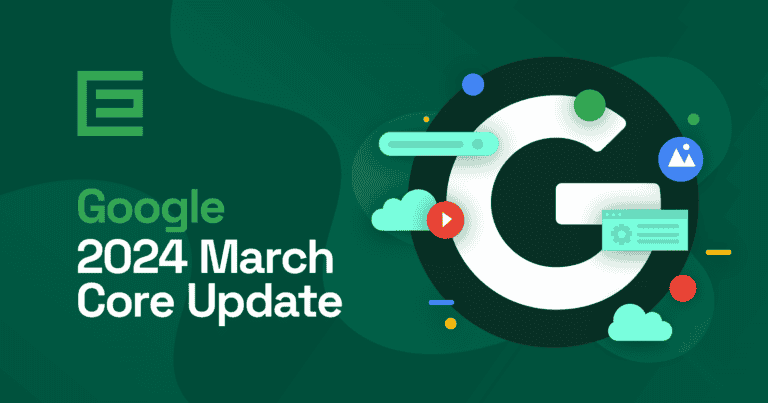In the ever-evolving world of search engine optimization (SEO), staying ahead of the curve often requires a deep understanding of how search engines rank websites. A significant event recently rocked the SEO community: the leak of internal Google algorithm documents. Dubbed the “Google Algorithm Leak,” these documents provide unprecedented insights into the inner workings of Google’s search ranking system, revealing aspects that have long been speculated but never confirmed.
The leak has unveiled details about Google’s use of neural search modifications to PageRank, the role of site-wide authority metrics, and the importance of various user interaction signals, among other elements. For SEOs and small business owners alike, understanding these revelations is crucial for adapting strategies and maintaining competitive advantages in search engine rankings.
This article aims to dive into the specifics of the Google Algorithm Leak, breaking down the complex information into actionable insights. We’ll explore the key findings from the leaked documents, discuss their implications for SEO practices, and provide practical strategies for small business owners to enhance their online presence. By the end of this comprehensive guide, you’ll have a clearer picture of what Google values in its ranking algorithm and how you can leverage this knowledge to improve your website’s performance.
In the following sections, we will dissect the leaked documents, provide a detailed analysis of the algorithm components, and offer step-by-step recommendations for optimizing your website. Whether you’re a seasoned SEO professional or a small business owner looking to boost your search engine rankings, this guide will equip you with the knowledge and tools to navigate the complexities of Google’s ever-changing algorithm.
Background of the Google Algorithm Leak
The Google Algorithm Leak emerged as a pivotal moment in the SEO community when thousands of internal documents from Google’s Content API Warehouse were released. This unprecedented leak surfaced in March 2024 and was initially brought to light by Rand Fishkin, co-founder of SparkToro, and further analyzed by Michael King, CEO of iPullRank. These documents provide a rare glimpse into Google’s closely guarded search ranking algorithms, contradicting many of the public statements made by Google over the years.
The leak was inadvertently made public by an automated GitHub bot called yoshi-code-bot, which exposed over 2,500 pages of API documentation. These documents, verified by ex-Google employees and technical SEO experts, detail various aspects of Google’s search operations, including how user interaction signals, content quality, and site authority are factored into the ranking process.
The key figures involved in this revelation include Rand Fishkin, who has a long history in the SEO industry and has been an influential voice in search marketing. Fishkin’s analysis, supported by the insights of Michael King, helped authenticate the documents and provide a deeper understanding of their implications. The documents also include insights from Erfan Azimi, CEO of EA Eagle Digital, who was instrumental in bringing the leak to public attention.
This leak is particularly significant because it not only confirms many long-held suspicions about Google’s ranking factors but also exposes new, intricate details about how the search engine evaluates websites. For instance, it reveals that Google uses a system called NavBoost, which incorporates user click data to assess the quality and relevance of search results. Additionally, the documents show that Google uses data from Chrome browsers and employs special filters for sensitive topics like elections and COVID-19.
Understanding the background of this leak is important for grasping the full scope of its impact. It challenges the transparency of Google’s public statements and provides SEOs and business owners with valuable insights into the factors that actually influence search rankings. Armed with this knowledge, stakeholders can better navigate the complexities of SEO and enhance their strategies to align with Google’s actual practices.
Summary of Key Findings
The Google Algorithm Leak has unveiled several key findings that are crucial for anyone involved in SEO. These findings highlight the complexity of Google’s search algorithm and underscore the importance of various ranking factors previously speculated but not confirmed. Here are the main takeaways from the leak:
1. Neural Search and Modified PageRank:
- Google has integrated neural search capabilities into its PageRank algorithm, called PageRank_NS. This modification allows Google to better understand the context and relevance of documents through advanced machine-learning techniques.
- Several different types of PageRank are mentioned in the documents, including the well-known ToolBarPageRank. These variations indicate a more nuanced approach to ranking different types of content and websites.
2. Site-Wide Authority Metrics:
- The leak reveals that Google uses several site-wide authority signals to evaluate the overall quality and relevance of a website. One of the significant signals is the traffic data from Chrome browsers, which helps Google assess user engagement and site popularity.
- Google also employs a site rank metric called Host NSR, which computes site-level rankings based on various chunks of the domain. This metric underscores the importance of maintaining a high-quality site across all its pages.
3. Content and Image Quality Signals:
- The documents highlight the importance of content quality, including factors like effort estimation for articles, which Google measures using a language model to determine the uniqueness and depth of the content.
- Image quality is also a significant factor, with Google measuring signals like usefulness, presentation, and engagement of images. This indicates that high-quality multimedia content can positively impact a site’s rankings.
4. User Interaction Metrics:
- Google uses detailed metrics to evaluate user interactions, including “good clicks,” “bad clicks,” and “last longest clicks.” These metrics help Google understand user satisfaction and engagement with the search results.
- The concept of NavBoost is central to this evaluation, as it incorporates user click data to enhance the relevance and quality of search results. Google uses NavBoost data at the query and host levels to influence rankings.
5. Clickstream Data from Chrome:
- Google leverages clickstream data from Chrome browsers to gain insights into user behavior and preferences. This data helps Google refine its search results and improve the accuracy of its ranking algorithm.
- Chrome data use highlights the importance of user engagement and interaction in Google’s ranking process, reinforcing the need for websites to provide a positive user experience.
6. Special Filters and Whitelists:
- The leak confirms that Google employs special filters and whitelists for certain sensitive topics, such as elections and COVID-19. For instance, the isElectionAuthority and isCovidLocalAuthority signals are used to manage the visibility of authoritative sources during critical events.
- These filters ensure that high-quality, trustworthy information is prioritized in search results, reflecting Google’s commitment to providing reliable content during significant events.
Components of Google’s Algorithm Revealed
The Google Algorithm Leak has provided a deep dive into the components that drive Google’s search ranking system. Here are some of the most critical elements revealed:
1. PageRank Variations:
- The leak details seven different types of PageRank, with PageRank_NS (Neural Search) being particularly noteworthy. This variation uses neural networks to understand and rank content more contextually.
- ToolBarPageRank, a legacy system, is still mentioned, highlighting Google’s evolution from simple link-based ranking to more sophisticated methods.
2. NavBoost, NSR, and ChardScores:
- NavBoost: A critical component that uses clickstream data to evaluate the quality of search results. It evaluates user satisfaction by analyzing good clicks, bad clicks, and engagement metrics.
- NSR (Neural Search Ranking): This component leverages neural networks to rank pages based on semantic understanding and user interactions.
- ChardScores: These scores predict site/page quality based on user interactions and content freshness, emphasizing the importance of regularly updated, high-quality content.
3. Page Embeddings and Site Embeddings:
- Google uses embeddings to create vector representations of pages and sites. Page Embeddings capture the content and context of individual pages, while Site Embeddings represent the overall thematic focus of a website.
- Metrics like SiteFocusScore and SiteRadius measure how closely related a page’s content is to the site’s overall theme, which impacts ranking.
4. Image Quality Signals:
- The leak introduces ImageQualityClickSignals, which assess the quality of images based on user clicks and engagement. This includes factors like presentation and usefulness, underscoring the importance of high-quality visuals in content.
5. Host NSR (Neural Search Ranking at Host Level):
- Host NSR calculates site-wide rankings based on aggregated data from different sections of the domain. It combines nsr, site_pr, and new_nsr to evaluate the overall authority and quality of a website.
These components illustrate Google’s multi-faceted approach to ranking, combining traditional metrics like PageRank with advanced neural network-based assessments and user interaction signals. Understanding these elements can help SEOs and content creators fine-tune their strategies to align with Google’s ranking priorities.
User Interaction and Behavioral Metrics
User interaction and behavioral metrics are at the heart of Google’s ranking algorithm, as revealed by the leak. Here are the key aspects:
1. Good Clicks vs. Bad Clicks
- Google distinguishes between “good clicks” (where users engage with the content) and “bad clicks” (where users quickly return to the search results). This helps Google assess the relevance and quality of search results.
2. Click Duration (Long Clicks vs. Short Clicks):
- The duration of user clicks is a significant metric. Long clicks indicate user satisfaction, while short clicks (or pogo-sticking) suggest that the content did not meet user expectations. Pages with longer engagement times are likely to rank higher.
3. NavBoost Queries:
- NavBoost not only evaluates individual clicks but also looks at user behavior across multiple queries. For instance, if users repeatedly refine their searches until they find a specific site, that site may receive a boost for the related queries.
4. Engagement Metrics:
- Metrics such as lastLongestClicks and unsquashedClicks (unfiltered genuine clicks) are used to assess user engagement. These metrics help Google understand which pages provide the best user experience.
5. Behavioral Patterns and Geo-segmentation:
- Google analyzes behavioral patterns at a granular level, including geographic segmentation. This means user interactions are evaluated differently based on location and device type (e.g., mobile vs. desktop).
6. Impact of Clickstream Data from Chrome:
- Data from Chrome browsers provides a comprehensive view of user behavior across the web. This data includes site visits, click patterns, and user engagement metrics, which are crucial for ranking decisions.
By focusing on user interaction and behavioral metrics, Google ensures that the most relevant and engaging content surfaces in search results. For SEOs, this highlights the importance of creating content that not only attracts clicks but also keeps users engaged.
Content and Link Metrics
The leak underscores the enduring importance of content and link metrics in Google’s ranking algorithm. Here’s what we learned:
1. Link Diversity and Relevance:
- Despite the evolution of Google’s algorithm, links remain a cornerstone of ranking. The documents confirm that link diversity (links from various sources) and relevance (contextually appropriate links) are crucial for high rankings.
- PageRank is still a vital factor, with the homepage’s PageRank influencing the overall site ranking.
2. Scoring of Short vs. Long Content:
- The leak reveals that short content can rank well if it provides unique and valuable information. Google assigns scores based on originality and usefulness, debunking the myth that only long-form content can rank.
- For Your Money Your Life (YMYL) content, such as health and financial advice, the quality and accuracy of the information are paramount.
3. Content Freshness:
- Google values fresh content and uses various signals to assess the freshness, including the date in the byline, URL, and on-page content. Regularly updating content can improve rankings, as Google prefers sites that provide current and relevant information.
- The concept of Flash Drives, Solid State Drives, and Standard Hard Drives indicates different storage priorities for content based on its update frequency and importance.
4. Use of Historical Data:
- Google maintains a record of every version of a page, using the last 20 changes to analyze link and content updates. This historical perspective helps Google evaluate the evolution and consistency of content quality.
5. Impact of Poorly Performing Pages:
- Pages with poor user metrics, such as high bounce rates and low engagement, can negatively impact the overall site ranking. Removing or improving such pages is essential to maintain a high site-wide quality score.
These insights emphasize the need for high-quality, relevant, and regularly updated content. Additionally, building a diverse and contextually appropriate link profile remains a key strategy for improving search rankings. By aligning content and link strategies with these findings, SEOs, and business owners can enhance their website’s visibility and performance in Google search results.
Actionable Insights for Small Business Owners
The Google Algorithm Leak offers a many insights that small business owners can leverage to optimize their websites and improve search rankings. Here are some actionable strategies based on the key findings:
1. Focus on High-Quality, Engaging Content:
- Create Comprehensive Content: Ensure your content is detailed, informative, and answers common user queries. High-quality content scores well in Google’s “effort estimation” metric, which assesses the depth and uniqueness of your articles.
- Use Multimedia: Incorporate high-quality images, videos, and infographics to make your content more engaging. Google’s ImageQualityClickSignals measure the presentation and usefulness of images, so investing in quality visuals can boost your rankings.
- Optimize for User Intent: Structure your content to match the intent behind search queries. Use clear headings, concise paragraphs, and bullet points to make your content easy to read and navigate.
2. Maintain a Well-Structured, User-Friendly Website:
- Improve Site Navigation: A well-designed website with intuitive navigation can enhance user experience and positively impact your NavBoost score. Make sure important pages are easily accessible and interconnected through internal links.
- Ensure Mobile-Friendliness: With the increasing use of mobile devices, it’s crucial to have a responsive design that works seamlessly on all screen sizes. Google’s algorithm evaluates user interactions across different devices, a mobile-friendly site can improve your overall rankings.
3. Regularly Update and Refresh Content:
- Keep Content Fresh: Regularly update your content to ensure relevancy and accuracy. This can involve adding new information, updating statistics, or incorporating recent developments related to your industry.
- Use Historical Data Wisely: Google keeps a record of page versions and uses the last 20 changes to analyze content quality. Regular updates can push out older versions and enhance your site’s freshness score.
4. Leverage Multimedia for Better Engagement:
- Add High-Quality Images and Videos: Images and videos can significantly improve user engagement. Ensure that your multimedia elements are relevant, high-quality, and optimized for fast loading times.
- Optimize Multimedia for SEO: Use descriptive file names, alt text, and captions for images and videos. This helps Google understand the content and context of your multimedia elements.
5. Avoid Keyword Stuffing and Focus on User Intent:
- Write for Users, Not Search Engines: Avoid the temptation to stuff keywords into your content. Instead, focus on providing value to your readers. Use natural language and ensure your content answers user queries effectively.
- Use Semantic Keywords: Incorporate related keywords and phrases that align with the main topic. This helps Google understand the context of your content and improves its relevance for related search queries.
6. Enhance Site Authority and Relevance:
- Build a Diverse Link Profile: Focus on acquiring links from a variety of reputable sources. Diverse and contextually relevant links can boost your site’s authority and improve its ranking.
- Guest Blogging and Partnerships: Engage in guest blogging and form partnerships with other reputable sites in your industry. This can help you earn high-quality backlinks and increase your site’s visibility.
Optimizing for User Engagement
User engagement metrics play a critical role in Google’s ranking algorithm. Here are some strategies to optimize for user engagement:
1. Increase Good Clicks and User Engagement:
- Create Compelling Titles and Descriptions: Craft engaging and relevant titles and meta descriptions that encourage users to click on your links. Ensure that your content delivers on the promise made in the title and description to keep users engaged.
- Enhance Content Readability: Use clear and concise language, short paragraphs, and bullet points to make your content easy to read. Break up text with subheadings and multimedia to maintain user interest.
2. Improve Internal Linking and Site Navigation:
- Strategic Internal Linking: Use internal links to guide users to related content on your site. This not only helps with SEO but also keeps users on your site longer, increasing engagement and reducing bounce rates.
- Optimize Navigation Menus: Ensure that your navigation menus are well-organized and intuitive. Include links to your most important pages in the main navigation to make them easily accessible.
3. Provide a Positive User Experience:
- Fast Loading Times: Ensure that your website loads quickly. Use tools like Google PageSpeed Insights to identify and fix any performance issues.
- Mobile Optimization: With a significant number of users accessing websites via mobile devices, it’s essential to have a website optimized for mobile. Use responsive design to ensure your site looks and functions well on all devices.
4. Encourage User Interaction:
- Add Interactive Elements: Incorporate interactive elements like quizzes, polls, and comment sections to encourage user interaction. This can increase the time spent on your site and improve engagement metrics.
- Respond to User Comments: Engage with your audience by responding to comments and questions. This not only fosters a sense of community but signals to Google that your site is active and engaging.
5. Analyze and Improve User Behavior Metrics:
- Use Analytics Tools: Regularly monitor user behavior using tools like Google Analytics. Track metrics such as bounce rate, average session duration, and pages per session to understand how users interact with your site.
- Make Data-Driven Improvements: Use the insights gained from analytics to make informed decisions about content and site improvements. Identify pages with high bounce rates and low engagement, and work on enhancing them.
With these strategies, small business owners can improve critical user engagement metrics for ranking higher in Google search results. A positive user experience not only helps SEO, but builds trust and loyalty among visitors, ultimately driving more traffic and conversions.
Implementing these actionable insights from the Google Algorithm Leak can significantly enhance your website’s performance. By creating high-quality, engaging content, maintaining a well-structured site, regularly updating content, and optimizing for user engagement, you can align your SEO strategy with Google’s ranking priorities and achieve better search visibility.
Next Steps: Leveraging the Google Algo Leak
The Google Algorithm Leak has provided an unprecedented look into the intricacies of Google’s search ranking system. For small business owners and SEOs, this leak offers a wealth of actionable insights that can significantly enhance their online strategies. By focusing on high-quality content, user engagement, and site authority, businesses can better align their SEO efforts with Google’s actual ranking priorities.
The key takeaways from the leak include the importance of user interaction metrics, the value of fresh and relevant content, the need for a diverse and high-quality link profile, and the benefits of optimizing for mobile users. Additionally, understanding the role of advanced elements like neural search ranking and site embeddings can help businesses stay ahead in the competitive SEO landscape.
By implementing the strategies outlined in this article, small business owners can improve their website’s visibility, attract more qualified traffic, and ultimately drive better business outcomes. As the digital landscape continues to evolve, staying informed and adaptable will be crucial for maintaining and enhancing online presence.
In conclusion, the insights from the Google Algorithm Leak serve as a valuable guide for refining SEO practices. Embrace these findings, continually update your strategies, and focus on providing a superior user experience to achieve long-term success in search engine rankings.
FAQs
The Google algorithm leak refers to the release of thousands of internal Google documents that provide insights into the company’s search ranking algorithm. These documents reveal how Google evaluates and ranks content, including factors like user engagement, content quality, and site authority.
The leak provides valuable information about the inner workings of Google’s ranking system, allowing SEOs to better understand and optimize for the factors that truly matter. By aligning their strategies with the insights from the leak, SEOs can improve their website’s visibility and performance in search results.
Key components include variations of PageRank, user interaction metrics (such as good clicks and bad clicks), content quality signals, the use of clickstream data from Chrome, site embeddings, and special filters for sensitive topics. Understanding these components can help SEOs refine their optimization strategies.
Small businesses can focus on creating high-quality, engaging content, improving site navigation, regularly updating content, leveraging multimedia, and building a diverse link profile. Additionally, optimizing for user engagement by enhancing readability and user experience is crucial.
Best practices include producing comprehensive and informative content, using multimedia elements, optimizing for user intent, ensuring mobile-friendliness, and regularly updating content to keep it fresh. Engaging with users through comments and interactive elements can also boost engagement metrics.
Tags: Google • Our Favorites • Search Engine Optimization






